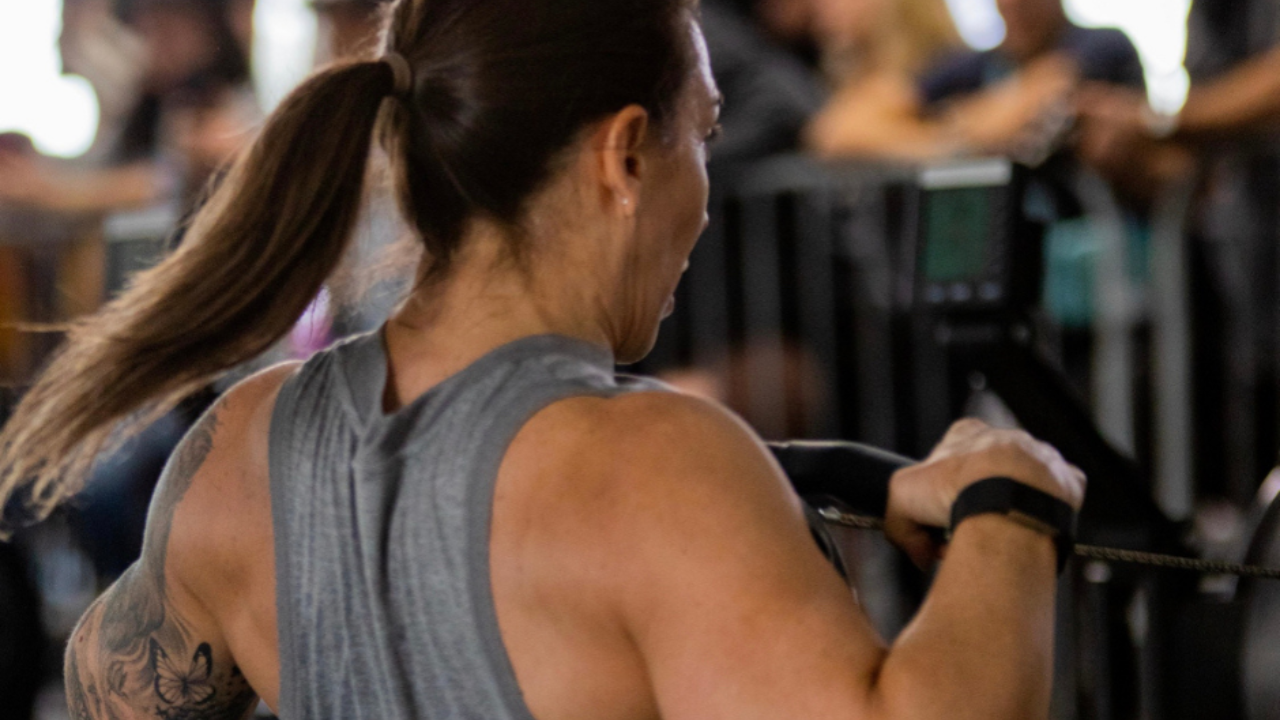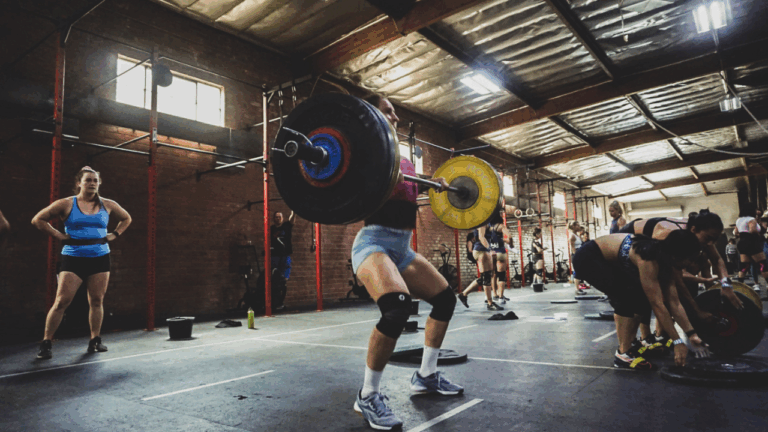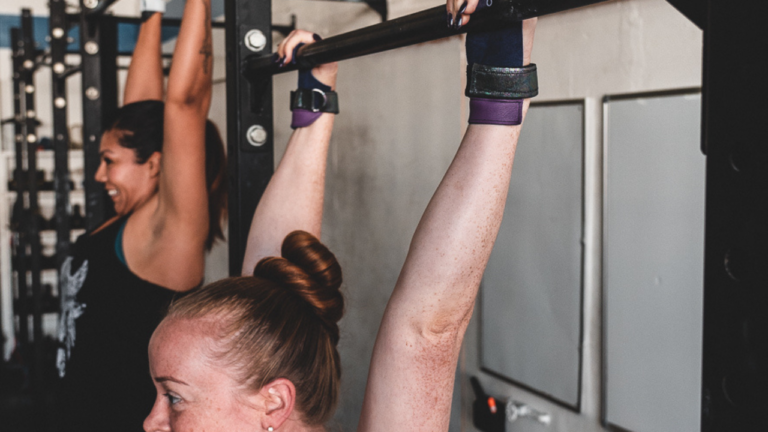Wanting to Be the Best in CrossFit? Here’s How to Build the Strongest Aerobic Base
If you’ve been grinding through WODs and wondering why your performance plateaus halfway through a competition, the answer might not be in your squat max or your kipping pull-ups. It’s in something far less glamorous but infinitely more foundational: your aerobic capacity.
Dr. Andy Galpin, one of the world’s leading exercise physiologists, has spent decades researching human performance. His insights on building aerobic capacity aren’t just theory—they’re backed by science and proven in the trenches with elite athletes. And here’s the thing: CrossFit athletes might need it more than anyone else.
Let’s dive into how to build an aerobic engine that will make you unstoppable in the box.
Why Aerobic Capacity Matters in CrossFit
CrossFit’s constantly varied, high-intensity functional movements demand energy from multiple systems. While the sport celebrates strength, power, and anaerobic capacity, your aerobic system is the foundation that supports everything else.
Here’s what a strong aerobic base does for you:
Recovery Between Efforts: That ability to come back strong for the next round? That’s aerobic capacity. It determines how quickly you can clear lactate and restore ATP between sets.
Work Capacity: Your aerobic system allows you to maintain output across longer workouts without hitting the wall. Think about “Murph” or any workout that lasts beyond 10 minutes—that’s aerobic endurance.
Durability: A well-developed aerobic system reduces injury risk, speeds recovery between training sessions, and allows you to handle higher training volumes without burning out.
Metabolic Flexibility: Better aerobic capacity means you can efficiently use fat as fuel, sparing glycogen for when you really need to hit the gas.
Dr. Galpin emphasizes that aerobic capacity isn’t just about endurance athletes—it’s the foundation for all performance. Without it, you’re building a house on sand.
Dr. Galpin’s Framework for Aerobic Development
Dr. Galpin breaks aerobic training into specific zones and intensities, each serving a distinct purpose. Here’s his framework adapted for CrossFit:
Zone 1: Nasal Breathing (Base Building)
This is low-intensity, conversational pace work where you can breathe exclusively through your nose. Heart rate typically sits at 60-70% of maximum.
Why it matters: This builds mitochondrial density, increases capillary networks, improves fat oxidation, and enhances parasympathetic recovery. It’s the foundation of the aerobic pyramid.
Galpin’s recommendation: 150-180 minutes per week minimum, ideally spread across multiple sessions.
Zone 2: Steady State (Aerobic Development)
Slightly higher intensity where you can still maintain a conversation but might need to breathe through your mouth. Heart rate around 70-80% of maximum.
Why it matters: This is the sweet spot for building aerobic capacity without excessive fatigue. It improves cardiac output, increases stroke volume, and enhances the ability to sustain moderate intensities.
Galpin’s recommendation: 45-60 minutes, 1-2 times per week.
Zone 3-4: Threshold Work (Lactate Clearance)
This is uncomfortable but sustainable work at 80-90% of max heart rate. You’re flirting with the lactate threshold—the point where lactate production exceeds clearance.
Why it matters: This teaches your body to buffer and clear lactate more efficiently, raising the ceiling on sustainable intensity.
Galpin’s recommendation: Interval work totaling 20-30 minutes of quality time in zone, 1-2 times per week.
Zone 5: VO2 Max Intervals (Peak Aerobic Power)
Maximum aerobic efforts at 90-100% heart rate max. These are all-out efforts lasting 3-8 minutes or interval protocols that accumulate time at VO2 max.
Why it matters: This expands your aerobic ceiling—your maximum oxygen uptake and utilization. A higher VO2 max means more capacity to work at high intensities.
Galpin’s recommendation: 1 session per week, with careful attention to recovery.
The Critical Mistake Most CrossFitters Make
Here’s the brutal truth: most CrossFit programming accidentally turns every training session into Zone 3-4 work. You know the feeling—you’re breathing hard, heart rate elevated, but not quite redlining. It’s that uncomfortable middle ground.
Dr. Galpin calls this “moderate-intensity purgatory,” and it’s where adaptations go to die.
Why? Because you’re too hard to build the aerobic base (Zone 1-2) but not hard enough to push VO2 max (Zone 5). You end up in no-man’s land, accumulating fatigue without maximizing any specific adaptation.
The solution? Polarized training: spend most of your aerobic work easy (Zone 1-2), a smaller amount at threshold (Zone 3-4), and specific sessions at maximum intensity (Zone 5).
Building the Strongest Aerobic Base: A CrossFit Program
Here’s how to integrate Dr. Galpin’s recommendations into a well-balanced CrossFit program. This assumes you’re training 5-6 days per week.
Weekly Structure
Monday: Strength + Zone 1
- Morning: Back Squat 5×5 @ 75-80% or similar strength work
- Evening (or post-WOD): 30-40 minutes Zone 1 (nasal breathing only)
- Options: Row at easy pace, bike, walk with weighted vest, swim
Tuesday: CrossFit WOD + Threshold Work
- Skill work: Double-unders, muscle-ups, handstand walking (10-15 min)
- WOD: Moderate volume, mixed modal (e.g., “Cindy” or similar 20-min AMRAP)
- Finisher: 4 rounds – 3 min at 85% effort on rower, 2 min easy
- This accumulates quality threshold time
Wednesday: Active Recovery + Long Zone 1
- 60-90 minutes Zone 1 activity
- Perfect day for a long easy bike ride, hike, or swim
- Keep nasal breathing throughout
- This is your mitochondrial factory day
Thursday: Strength + VO2 Max Intervals
- Press/Push Press 5×3 or similar upper body strength
- VO2 Max Session (choose one):
- 5 x 3-min max effort on Assault Bike, 3-min rest between
- 8 x 500m row @ max sustainable pace, 2-min rest between
- 6 x 800m run at 3k-5k race pace, 90-sec rest between
- Cool down: 15-20 min Zone 1
Friday: CrossFit Benchmark + Zone 1
- Test a benchmark WOD (Fran, Helen, Grace, etc.)
- Post-WOD: 30 minutes Zone 1 on rower or bike
- Focus on recovery, flushing out metabolites
Saturday: Long Mixed Modal + Steady State
- 45-60 minutes at Zone 2 intensity
- Example: “Chipper” style workout with multiple movements, steady sustainable pace
- 50 wall balls, 400m run, 40 kettlebell swings, 400m run, 30 box jumps, 400m run, 20 thrusters, 400m run, 10 burpee pull-ups
- Or partner WOD where you’re working 60-70% of the time
- The key: maintain conversational pace throughout
Sunday: Complete Rest or Optional Zone 1
- True rest day, or
- 30-45 minutes of very easy movement if you feel good
- Yoga, walking, easy swim
Monthly Progression
Weeks 1-2: Base Building Phase
- Emphasize Zone 1 volume (aim for 180+ minutes)
- One VO2 max session
- One threshold session
- Moderate WOD intensity
Weeks 3-4: Development Phase
- Maintain Zone 1 volume (150-180 minutes)
- Two threshold sessions
- One VO2 max session
- Increase WOD intensity
Week 5: Deload
- Reduce overall volume by 30-40%
- Maintain Zone 1 work but reduce threshold and VO2 sessions
- Light technical work and skill development
Repeat cycle, making small progressive increases in volume and intensity.
Practical Implementation Tips
Monitoring Intensity
Use the Talk Test: If you can’t sustain a conversation, you’re too hard for Zone 1-2. If you can sing, you’re too easy for Zone 2.
Nasal Breathing: For Zone 1, commit to exclusive nasal breathing. The moment you need your mouth, slow down. This is a game-changer for discipline.
Heart Rate: While not perfect, HR zones give objective feedback. Invest in a reliable HR monitor and learn your zones through testing.
RPE (Rate of Perceived Exertion): Zone 1 should feel like 3-4/10, Zone 2 like 5-6/10, threshold like 7-8/10, and VO2 max like 9-10/10.
Common Adjustments for CrossFitters
“I don’t have time for all this extra cardio!”: Start with 3 days of Zone 1 work for 30 minutes. That’s 90 minutes. Most people waste more time than that scrolling social media. Make it non-negotiable like brushing your teeth.
“Zone 1 feels too easy”: Good. That’s the point. Your ego wants to go harder, but your mitochondria need this stimulus. Trust the process. Easy days should feel genuinely easy.
“Won’t this hurt my strength gains?”: Not if programmed correctly. Zone 1 work actually enhances recovery, allowing you to train harder in your strength sessions. It’s when you’re constantly in Zone 3-4 that you compromise strength adaptations.
“What about competition season?”: During comp prep, maintain Zone 1 work but reduce total volume. Cut threshold work to once per week or every other week. Keep one VO2 session. The aerobic base maintains fitness while you sharpen specific CrossFit skills.
Recovery Markers
Dr. Galpin emphasizes monitoring recovery to ensure you’re adapting, not just accumulating fatigue:
- Heart Rate Variability (HRV): Track daily. Declining trends suggest inadequate recovery
- Resting Heart Rate: A chronically elevated RHR indicates overtraining
- Sleep Quality: If sleep degrades, you’re overdoing it
- Workout Performance: If Zone 1 pace at same HR improves, you’re adapting
The 12-Week Transformation
Follow this framework religiously for 12 weeks, and here’s what you’ll notice:
Weeks 1-4: You’ll feel like you’re “wasting time” with easy work. Your ego will hate it. Zone 1 will feel frustratingly slow. Push through—cellular adaptations are happening beneath the surface.
Weeks 5-8: You’ll notice you’re recovering faster between WOD rounds. Your heart rate drops more quickly after efforts. Long workouts don’t feel as soul-crushing. You’re building the engine.
Weeks 9-12: This is where it clicks. Your threshold pace is faster than your old race pace. You’re hitting PRs in metcons without feeling like you’re dying. You can sustain higher outputs longer. You’ve built a true aerobic base.
The Bottom Line
CrossFit rewards the well-rounded athlete, but most CrossFitters train like specialists—lots of intensity, minimal aerobic development. Dr. Galpin’s framework flips this script, building the massive aerobic foundation that allows everything else to flourish.
Your snatch will always be limited by your strength, but your Murph time? Your performance in a 30-minute chipper? Your ability to dominate the Open and stay consistent through five workouts in a weekend? That’s aerobic capacity.
Stop chasing the burn in every workout. Start building the base. Train slow to race fast. Be disciplined about your easy days, strategic about your hard days, and watch your CrossFit performance reach levels you didn’t think possible.
The best CrossFit athletes aren’t the ones who go hard every day. They’re the ones who go hard when it matters, and easy when it counts. Build your aerobic engine first, and everything else will follow.
Ready to start building your aerobic base? This isn’t theory for us— we use Dr. Galpin’s exact recommendations to program all our metcons and conditioning work. Every workout is strategically designed to hit the right energy system at the right intensity, building your aerobic engine while developing the speed, power, and strength CrossFit demands.
No more random WODs. No more wondering if you’re training hard enough or too hard. Just intelligent programming that follows the science.
If you want structured programming that builds a world-class aerobic base while keeping you strong and explosive, join us. Your future self—crushing workouts while everyone else is gasping—will thank you.
Now get after it. Slowly (when it counts)!






